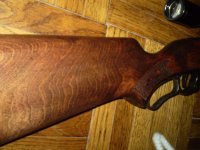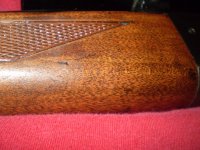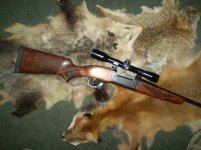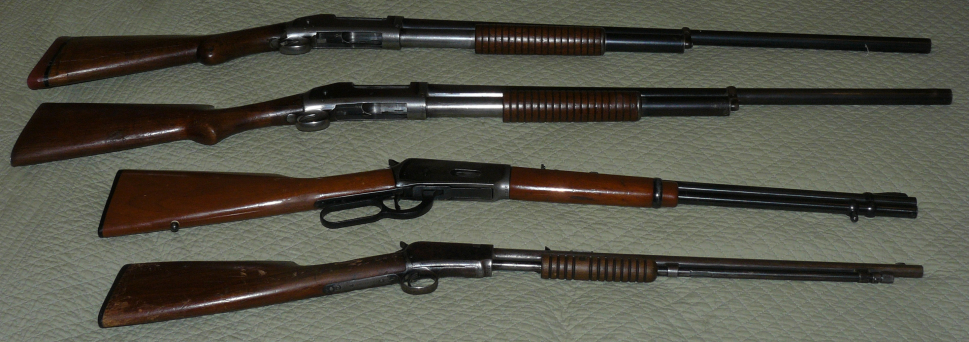i was given a chance to clean out my wife's grandparents house tonight and fount a model 99e savage .243 and a Winchester model 1894 30-30
they are both in good shape as far as the metal and bluing but the 99e was in dire need of stock work (i love old guns but love to shoot them even more) the lacquer was chipped wood was dented scraped mangled it need fix so i could enjoy shooting it but i have not touched the 94 yet i read it may be a collector the butt plate is steel so i assume it was before either the 50s or 60s when ever they changed production it has about 90% bluing and the stock is definitely used but still ok (im fighting an internal battle not to clean it up)
but i have not touched the 94 yet i read it may be a collector the butt plate is steel so i assume it was before either the 50s or 60s when ever they changed production it has about 90% bluing and the stock is definitely used but still ok (im fighting an internal battle not to clean it up)
are either one of these rifles worth more than 500$ and how can i check the year they were made?
they are both in good shape as far as the metal and bluing but the 99e was in dire need of stock work (i love old guns but love to shoot them even more) the lacquer was chipped wood was dented scraped mangled it need fix so i could enjoy shooting it
are either one of these rifles worth more than 500$ and how can i check the year they were made?




